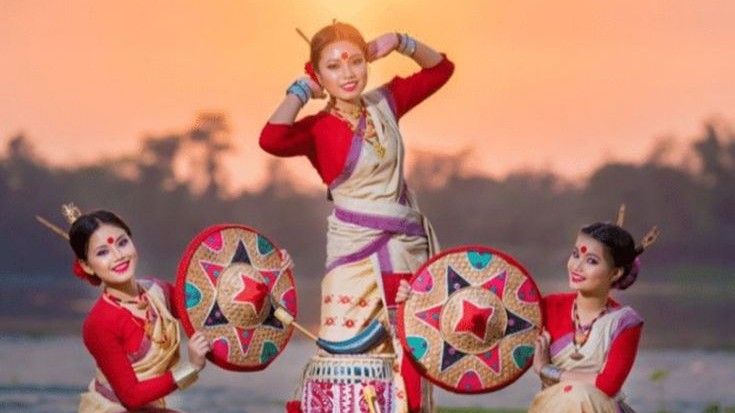
Magh Bihu is ignited for the ceremonial ending and supplication to the Fire God. The festival originates from the Tibeto-Burman cultural traditions and the Kachari festival known as Magan. This year, the Magh Bihu, referred to as Bhogali Bihu, was celebrated as the area's distinctive interpretation of Makar Sankranti on January 15.
Magh Bihu is a festival of harvest observed by the Assamese community. It is observed in the month of January. The festivities begin on January 14th and conclude on January 15th.
Happy Magh Bihu pic.twitter.com/hTRFujFpmC
— Shipra Shriti (@MamoniOjha) January 14, 2025
The eve of the Magh Bihu is known as Uruka, which is the day celebrated. In Assam, it's the most culinary night of the year when loved ones gather and enjoy a feast around a bonfire. The following day marks the primary Magh Bihu. In the early hours, individuals bathe and ignite the primary 'Meji' made from bamboo and wood.
#WATCH | Nagaon, Assam | People celebrate Magh Bihu, the annual harvest festival, as they burn traditional Meji (bonfire) in the Bhotaigaon area. pic.twitter.com/ybXx4mw2DG
— ANI (@ANI) January 14, 2025
The Bihu dance is a vital component of Assamese culture, honouring the seasonal essence, fertility, and fervor during the Magh Bihu festival. This customary dance is executed by teams of young males and females, displaying their lively spirit and excitement.
The essence of the Bihu dance relates to fertility, both human and environmental. It embraces the springtime and the vital rain, which enriches the soil and guarantees a plentiful yield. The dance represents Assamese cultural identity, showcasing the community's vibrant heritage and customs.
A Time to Honor Nature and Community – Magh Bihu
— NorthEasternCouncil (@NEC_GoI) January 14, 2025
Magh Bihu is more than a festival; it’s a celebration of culture, unity, and gratitude for nature’s blessings. Bonfires light the night as families and communities come together to feast and rejoice.#MaghBihu #AssamFestival pic.twitter.com/5tMw1KjhCF
The Bihu dance acts as an opportunity for communities to unite, rekindle friendships, and exchange food. It's a tribute to nature's abundance and a way to express appreciation for the diligent farmers who labor to produce the harvest.